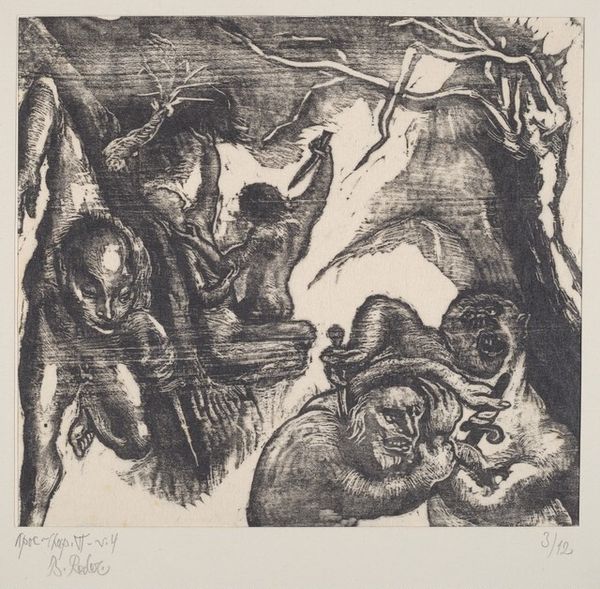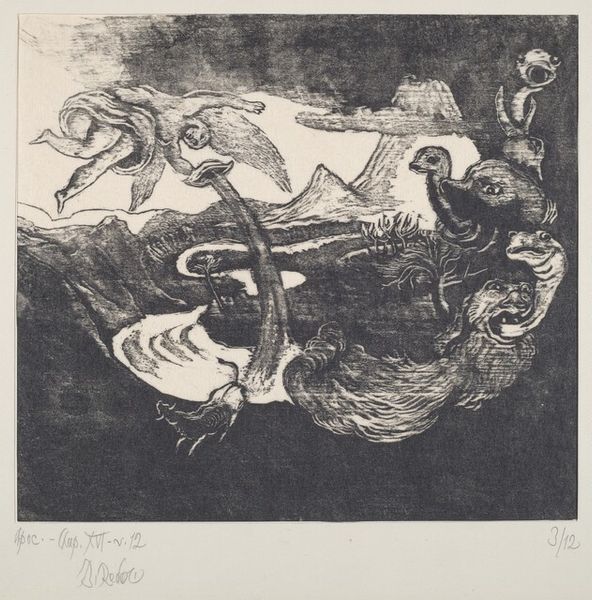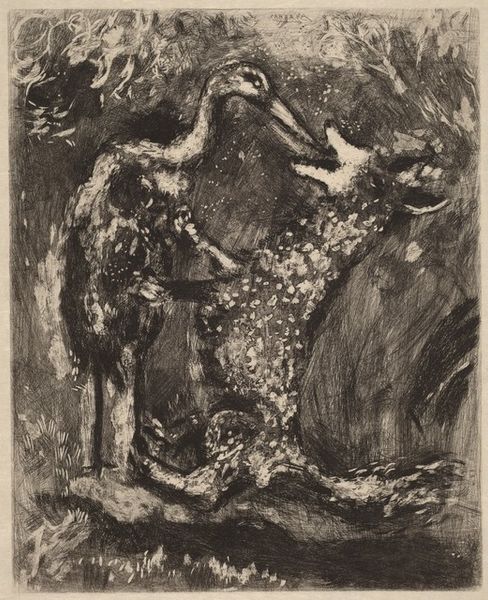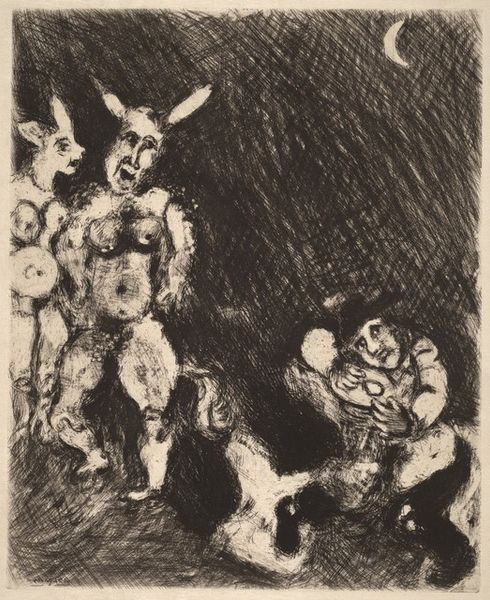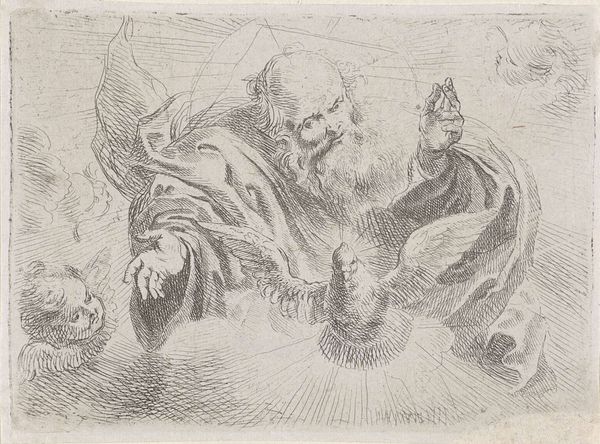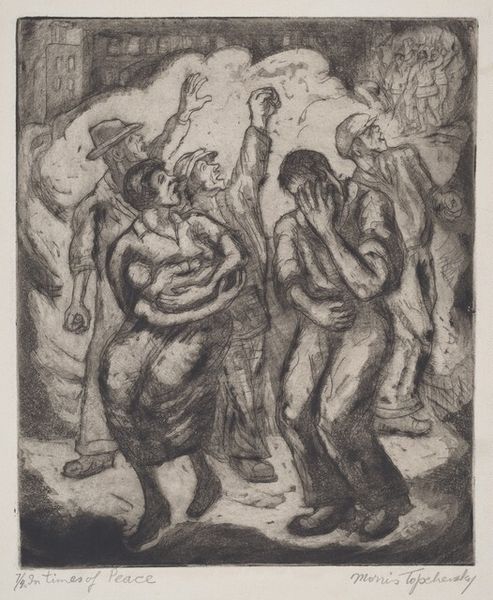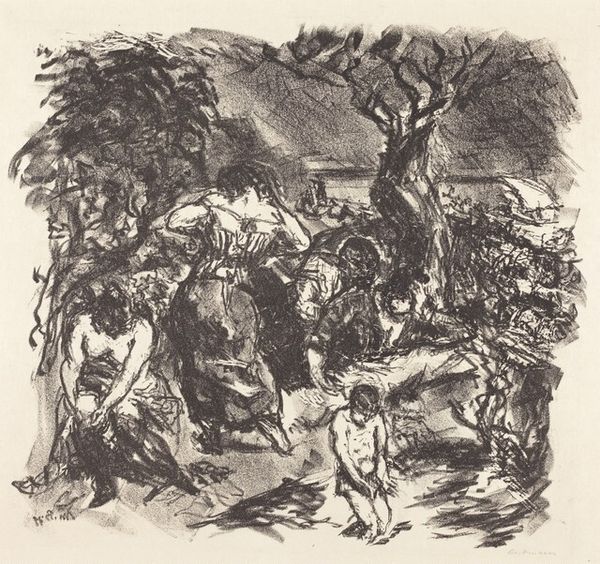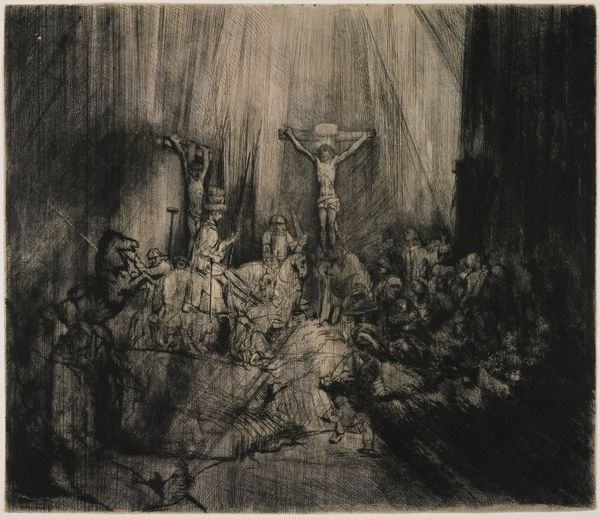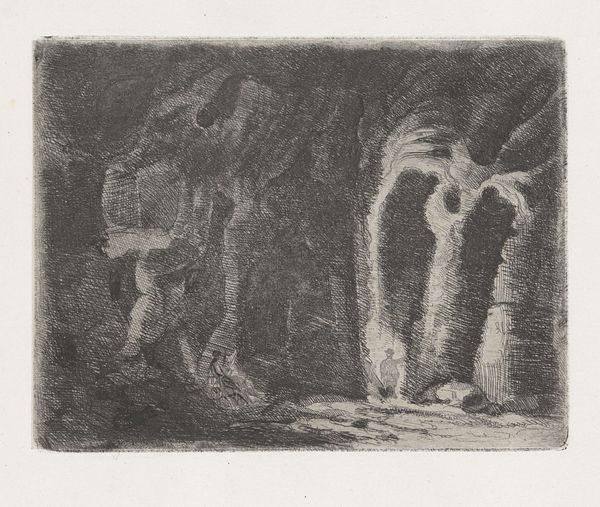
"And I saw the heaven opened, and behold a white horse..." XIX.11
0:00
0:00
drawing, print, intaglio
#
drawing
#
narrative-art
# print
#
intaglio
#
fantasy-art
#
figuration
Copyright: National Gallery of Art: CC0 1.0
Curator: Let's turn our attention to this arresting intaglio print, "And I saw the heaven opened, and behold a white horse...XIX.11" by Bernard Reder. Editor: It feels biblical, definitely apocalyptic, almost aggressively surreal, don’t you think? The tonal contrast alone creates an undeniable sense of drama. Curator: Precisely. Reder draws directly from the Book of Revelation. Look closely—we see the rider on the white horse, a figure symbolizing divine judgment and victory. It's vital to view this piece as arising during the immense social upheavals of the 20th Century when many artists turned to the Bible to engage with the rise of totalitarian ideologies and their repercussions. Editor: The textural density here is phenomenal. Notice how Reder employs incredibly fine lines to build volume, shadow, creating almost a vibrating effect. Consider the composition – it is constructed around layers. Dark figures anchor the composition, providing a foil for the brightness of the central apparition. The artist uses an almost chaotic, dreamlike space to highlight a traditional religious subject, playing with the idea of formlessness against familiar images. Curator: Yes, the dense hatching, the grotesque figures, recall the horrors of war. While the biblical narrative offers hope, Reder presents a more complex picture, tinged with the anxieties of his time. His work resonates with broader conversations about the individual’s place during conflict and how institutional oppression influenced cultural life and individual choices in 1940s America. Editor: What stays with me is how such a relatively small print commands such attention through its expert control of tonal value. A brilliant exploitation of the intaglio technique to evoke complex psychological depth. It speaks to the strength that an image can take with minimal formal choices. Curator: Indeed. Considering Reder's personal history—his exile, his deep concern with freedom—this print acts as a powerful visual document about this turning point in his artmaking, embodying resilience and bearing witness during the war. Editor: The expressive mark-making, in combination with the religious content, delivers more feeling than first expected. This artwork moves me toward new trains of thought.
Comments
No comments
Be the first to comment and join the conversation on the ultimate creative platform.

